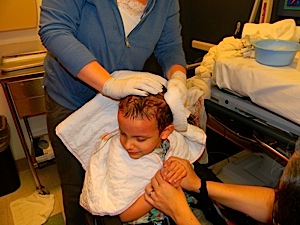how do they do an eeg on a baby
They do not produce any sensation. A series of wires are glued to the babys head.

Baby Stella Gets An Eeg Youtube
Some babies are given a sedative before the tests so they are more settled.

. An electroencephalogram EEG is a non-invasive test that records electrical activity in the brain. This compressed screen allows for better display of very slow activity asymmetries and asynchronies that are crucial to evaluate in neonatal recordings. The first year of life on EEG is characterized a preponderance of slow high amplitude delta activity.
During the test your child may be asked to change how fast he or she breathes. We ask that you do the following to prepare him or her for the EEG. Some people wear an elastic cap fitted with electrodes instead of having the adhesive applied to their scalps.
EEGs are usually done to detect seizures and to diagnose epilepsy but they can be used to evaluate or diagnose other conditions such as sleep disorders or brain injuries. During an EEG flat metal discs electrodes are attached to the scalp. The technologist puts electrodes on each of the marked spots on the scalp.
The EEG technician will attach electrodes to different locations on the scalp using adhesive paste. How long does an EEG take for an infant. The monitor will record the electrical activity of your childs brain.
Some children may find this part of the process a little uncomfortable. The technician will measure your childs head and mark where they will place electrodes. A series of wires are glued to the babys head.
Youll be able to go about your routine in as normal a way as possible while making sure to carry this little box every where you go and your child will be able to sleep in their own bed. An EEG measures brain waves through small metal disks called electrodes that. It works by picking up abnormal brain waves via electrodes that are attached to the scalp.
Your child should avoid caffeine and sugar the night before the test. EEGs are done at Auckland City Hospital. The electrodes are connected to the EEG machine with wires.
Next the technologist will clean the red areas and attach small electrodes with thin wires on the marked spots. They will then glue the electrodes on each spot that they marked. The EEG technologist will make markings with a red washable skin crayon on your childs scalp to ensure the electrodes are applied in very specific locations.
Each electrode is connected to an amplifier and EEG recording machine. Your child will be asked to lie on a bed or sit in a chair. The EEG usually takes about half an hour.
During the recording heshe may be asked to breathe fast hyperventilate look at flashing lights and try to. Wash your childs hair the night before the EEG. The recording should be continuous and symmetric but not particularly reactive to eye opening until 2-4 months.
They may rub a gritty cream on those places to help the electrodes stick better. The test causes no discomfort. But the EEG signal also contains.
The EEG technologist measures your childs head and makes small marks on the scalp with a washable marker or pen. An EEG or electroencephalogram is a test that records the electrical signals of the brain by using small metal discs called electrodes that are attached to your scalp. This will help stabilize blood sugar levels and facilitate sleep.
Neonatal EEG is typically displayed with a longer time interval on the screen a faster paper speed of 15 mms producing a more compressed-appearing recording. Your brain cells. A healthcare provider will put gel or cream on your childs scalp.
He will place small discs in different places on your childs head. Stay up two hours later than usual the night before for the. In that case the EEG will be attached to your childs head and covered with a hat or sock that attaches to a box that is recording the brain waves.
The EEG has been used for many years and is considered a safe procedure. Tapping the EEG EEGs available in most pediatric practices measure brain electrical activity and are usually used to diagnose or evaluate people with epilepsy. The Procedure An EEG can be done in the doctors office a lab or a hospital.
The technologist rubs each marked area with a gritty lotion so the electrodes transmit well. In all 70 babies had usable EEG data. What to expect during an EEG.
How is an EEG done. Clean hair will make it easier to remove the electrodes after the test. After this point a PDR.
A special paste is used to affix the electrodes. In a high-density EEG shown here the electrodes are close together. An electroencephalogram EEG is a non-invasive test that records electrical activity in the brain.
The wires are connected to a machine which reads the electrical activity of the brain. In addition there is no risk of getting an electric shock. Clean hair will make it easier to remove the electrodes after the test.
The electrodes record activity. Be prepared to answer questions about your childs medical history current symptoms and medications. The discs will be connected to wires and a monitor.
In rare instances an EEG can cause seizures in a person with a seizure disorder. Make sure your child eats a meal or snack an hour or two before the test. They put glue on the electrodes.

Baby Eeg Project Gartstein Temperament Lab Washington State University

Infant Brain Responses Predict Reading Speed During Later Childhood Secondary School Reading Disabilities Infant

Epilepsy Monitoring Unit Testing With Video Eeg

Invasive Electroencephalography Eeg Monitoring Before Epilepsy Surgery
How To Study Language Why Do We Put Electrodes On People S Heads Lucid
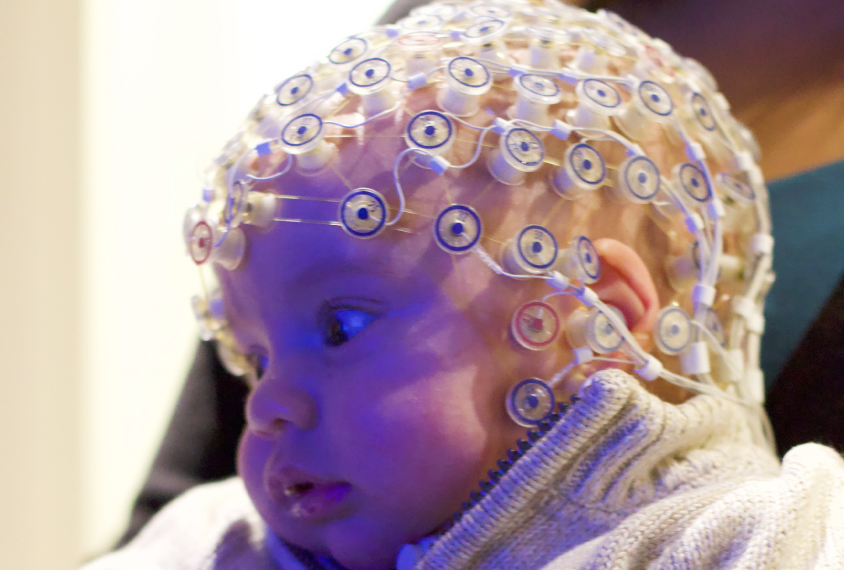
Certain Patterns Of Brain Waves In Babies May Forecast Autism Simons Center For The Social Brain
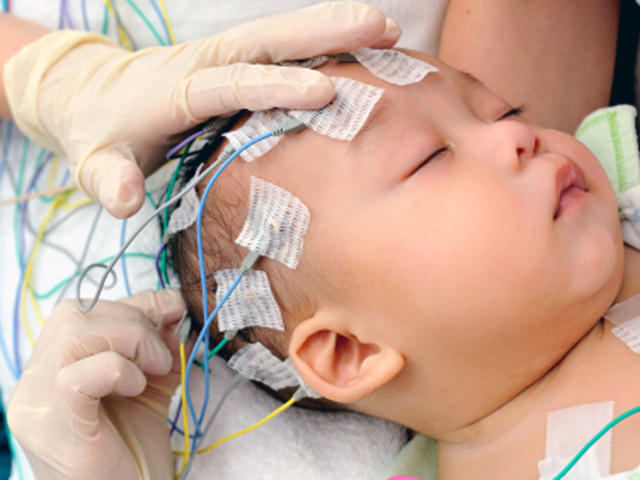
Eeg Brain Scans May Detect Signs Of Autism In 2 Year Olds Cbs News
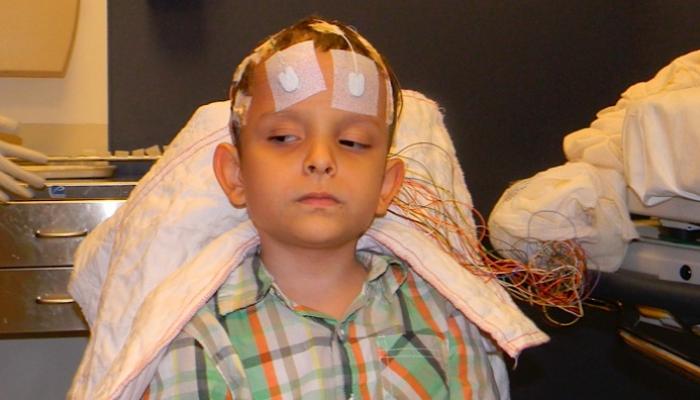
What Is An Eeg Really Like Wonderbaby Org
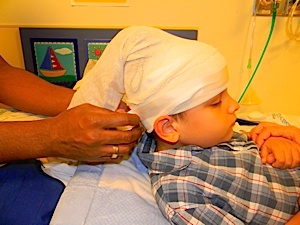
What Is An Eeg Really Like Wonderbaby Org

Brain Products R Nets Now Available For Infant And Child Research

Mother S Voice Plays Specific Role In Activation Of Newborn Baby S Brain Bmed Report
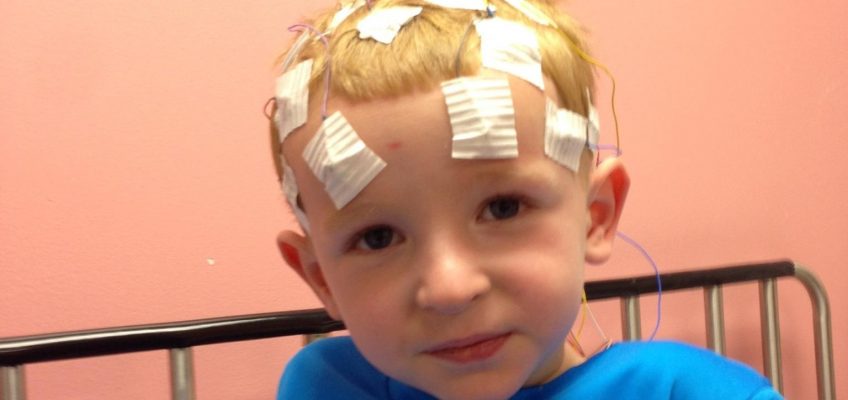
Emily S Perspective Help Your Child Through An Eeg Living Well With Epilepsy




